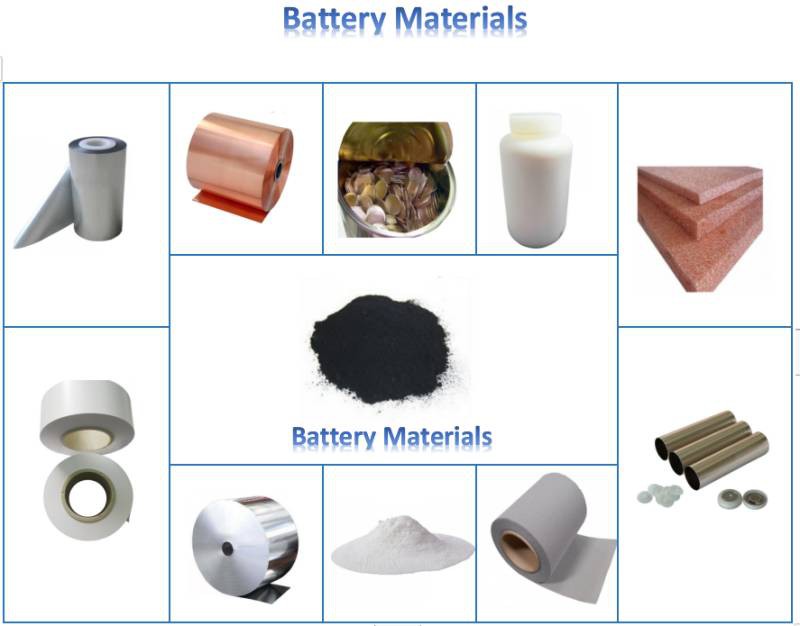Brand :
LinengItem NO :
LN-PCMCompliance :
CE CertificatePayment :
Credit Card, Paypal, T/T , Western Union, LCWarranty :
Two Years Limited Warranty With Lifetime SupportDelivery Time :
In stockWhatsapp:
+86 18659217588WeChat:
18659217588Email:
cassie@lionbatterymachine.comProcedure for Preparing Water-based Electrode Slurry (Graphite Anode) & Recipe:
· Weight Ratio (All other weights depends on how much active powder you will use):
o Anode Active Powder - MCMB: 94.5%
o CMC: 2.25%
o SBR: 2.25%
o Conductive- Super P: 1%
o De-Ionized water: At least 120% of MCMB
· Heat treat the active powder in the inert gas environment, 300~400ºC for an hour, *Heat treatment via LN Furnace is suggested, please click the underline to view product details.*
· Grind mill the active and conductive power for about 30 minutes. *Grind milling via LN Ball Mill is suggested, please click the underline to view product details.*
· Make liquid thickening agent: heat up de-ionized water to 80ºC and then slowly add CMC into the water and keep stirring until the CMC is fully dissolved. Usually this process will take >60 minutes.
· Slowly add SBR and stir for another 60 minutes. You may add some more water if the SBR can not be fully dissolved.
· Add active and conductive powder into the slurry and stir. It is suggested to separate the powders into 2 or 3 piles, add the first pile and mix for 30 minutes...add the second pile and mix for another 30 minutes...until all the piles are finished. This will help improve the mixing uniformity. *Slurry stirring by LN Vacuum Mixer is preferred, please click underline to view the recommended instruments*
· Take sample and test the viscosity. The recommended viscosity for the slurry is between 5000 and 6000 CPS. If the viscosity is above this range, add more de-ionized water; if the viscosity is lower, add more binder (CMC and SBR)
· *It is suggested to use LN Viscosity Tester to verify the slurry's viscosity, please click underline to view product details.*
Procedure for Preparing Cathode Electrode Slurry & Recipe:
· Weight Ratio (All other weights depends on how much active powder you will use):
o Cathode Active Powder - LiFePO4, LiCoO2... : 93.5%
o PVDF: 2.25%
o Conductive Super- C45: 4.0%
o NMP: 8/15 of the solid content by weight
· Heat treat the active powder in the inert gas or vacuum environment, 120~140ºC for two hours,
· Grind mill the active and conductive power for about 30 minutes.
· Heat up NMP solution to 80°C. Slowly add PVDF and keep stirring until the PVDF is fully dissolved. Usually this process will take around 120 minutes.
· Add active and conductive powder into the slurry and stir. It is suggested to separate the powders into 2 or 3 piles, add the first pile and mix for 30 minutes...add the second pile and mix for another 30 minutes...until all the piles are finished. This will help improve the mixing uniformity.
Take a sample and test the viscosity. The recommended viscosity for the slurry is around 6000 CPS
Specifications
Type | Product Name | Main Features |
Cathode Material for Li-ion Battery | LiCoO2 Powder | 1. Formula:LiCoO2 2. Appearance: Black Powder 3. Molecular Weight:97.88 4. First Discharge Capacity (mA/g) : 145 @1C 5. Reasonable A-G Range: 6. 6. Anode has 5% ~10% more capacity than the cathode. 6. Voltage Range vs Li: 3V ~ 4.2V |
LiFePO4 | 1. Tap density: 1.132G/cm3 2. Resistance: 114.9Ω.cm 3. First discharge efficiency: 97.5% 4. First capacity: 155.5mAh/g | |
PVDF Binder | 1. Purity:≥99.5% 2. standard specific gravity:1.74~1.77 3. Dielectric constant :4.50~5.50; 8.00~9.50 4. Melting Point:160-168 5. Melting Indix:1-2 6. Solubility:Transparent and dissolvable 7. Rotation Viscosity:≥2000 8. Intrinsic Viscosity :1.0-2.0 9. Moisture:≤ 0.1 | |
NMP Solvent | 1. The molecular 2. Purity:99.90% 3. Melting point: -24℃ 4. Boiling point: 202℃ 5. Density:1.028 g/ml 6. Refractive index:1.465-1.470 7. Flash point:95℃ | |
Super Conductive Carbon Black Powder | 1. BET Nitrogen surface area:62M2/g 2. Adsorption Stiffness Value (2):32Ml/5g 3. Moisture (as packed):0.1% 4. Density:160Kg/m3 5. Sulpher Content:0.02% 6. Iron(3):10ppm 7. Nickel:1ppm | |
Aluminium Foil | 1. Thickness:9-19um 2. Standard width:200mm 3. Length:120m/roll (size can be customized according to request) | |
Carbon Coated Aluminum Foil | 1.Aluminum foil thickness:12-30um 2.Conductive coating single surface density(g/㎡/ side):0.5-2.0 g/㎡ 3.Double coating 4.Each side coating thickness is 1um | |
Anode Material | MCMB Graphite Powder | 1. Appearance: powder 2. Color : black 3. Moisture ≤0.035% 4. Carbon content: 99.96% 5. Tap density: 1.324 g/cm³ 6. Specific surface area: 2.022㎡/g |
High Purity Carboxymethyl Cellulose Powder CMC | 1. Viscosity, mpa.s (2% aqueous solution):7000~10000 2. Purity:≥99.5% 3. Water content:≤10% 4. substituting degree:0.6~0.9 5. PH:6.0~8.5 6. heavy metal(pb), ppm:≤15 7. Fe, ppm:≤40 8. As, ppm:≤2 | |
Super P | 1. Volatile Content: 0.15 % max 2. Toluene Extract: 0.1% max 3. Ash content (600 °C): 0.05% max 4. Density: 160kg/m3 | |
Copper Foil | 1.Thickness:9-15um 2.Standard width:200mm (Size can be customized according to request) | |
Conductive Coating Copper Foil | 1.Size:201*0.008mm 2.Length: 35m-40m 3.Cooper Foil width: 150mm 4.Double coating 5.Each side coating thickness is 1um | |
SBR Styrene Butadiene Rubber | 1.Total solide (wt%):48~53 2. PH:5~7 3. Broofield viscosity (mPa.s):50~250 | |
Other | Aluminum laminated film | 1. Surface quality: Mat finish 2. Molding Depth≥5.0mm 3. Hot Sealing Coniditon: 180-190°C 4. AL/CPP peel strength≥ 6N/15mm |
| Separator | PP PE Celgard Optional |

Hot Tags: pouch cell materials, suppliers, manufacturers, factory, customized, price, discount, for sale, Supercapacitor Channeling Capper, Linimncoo2 Powder, LiPO battery production line, short circuit tester, 50ml Battery Electrolyte Filling Machine, Coin Cell Case
Quanzhou Lineng Mechinery and Equipment Co., Ltd is a technology-based enterprise, integrating R&D, manufacturing, sales and service. Our company has strong scientific research strength, including more than 20 senior mechanical and electrical engineers, 8 external experts and professors, and more than 160 front-line technical workers.